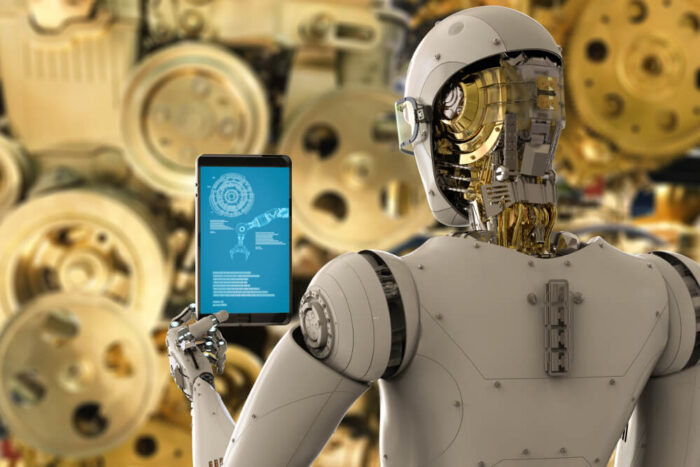The wave of technological changes is fast sweeping across multiple fronts. The rapid adoption of transformative technologies such as machine learning and artificial intelligence is putting us on the cusp of a new digital age. While we keep adding every ‘digital progress story’ to the list of the ‘next big thing’, another technological advancement in the physical space also has immense potential to disrupt the status quo. Robotics is indeed realigning the rich human talent pool, altering ways in which we operate. One of the most prominent examples is robotics in manufacturing.
Advanced robots with the ability to supplant human traits such as sensing, item recognition, memory, dexterity, and trainability are transforming the manufacturing ecosystem. These robots serve as launch pads for agile manufacturing across diverse industries. Thus, robotics is paving the way for smart manufacturing factories.
Robotics in Manufacturing – Redefining Automation
With further developments in robotics, robots will turn out to be more affordable and easier to use. Perceived as on the threshold of being technological mainstream, robotics in manufacturing space is growing globally at a healthy pace. There has been a significant resurgence in industrial robots over the last decade. Numerous manufacturers have adopted robotics to take on operational tasks that are dangerous, difficult or impractical for humans. The evolution of robots has opened up dynamic opportunities, choices, and new operational paths for manufacturers.
Robots Serving as Catalysts of Agile Manufacturing
In fact, robots have roots as far back as in the late 60s. For instance, General Motors had kickstarted the robotics era in 1961, to assist its assembly line. However, robots are reaching new sophistication standards in contemporary times. These robots can outstrip human speed and accuracy, while trimming operational costs. With expanded reach and range of motion, payload capacity, a boost in acceleration and speed, better safety functionalities, and faster communication with associated equipment – robots serve as catalysts for manufacturing by creating agile operational platforms. An agile factory focuses on end-to-end digitization and automation, which is the framework for the Industry 4.0. As with any major shift, Industry 4.0 also brings about other advancements, such as sensor information transparency, and decentralized decision-making in the manufacturing sector.
The development of a comprehensive range of robots by industry leaders demonstrates the commitment to robotics in the manufacturing space. ABB Ltd., Fanuc Corp., and Yaskawa Electric Corp. are transforming manufacturing with robotic arms that are tailored to specific industrial applications such as load, reach and repeatability specifications. Daihen Corp. and Kawasaki Robotics Inc. are among the most experienced industry leaders, who have been developing technically advanced controllers to meet the needs of the manufacturing sector. The rapid adoption of such robots is amply evident, as Kawasaki alone claims to have successfully installed 110,000 robots worldwide.
Adoption of Robotics across Diverse Industries
For decades, industry leaders have considered automation to be only elementary for the automotive sector. But advanced industrial robots have proven their utility across all industries – aerospace & defense, consumer goods, food & beverages, life sciences, biomedical, heavy metal, and warehouses.
The promise of industrial automation lies in automated production. Robots are living up to the market expectations with the emergence of Industrial Internet of Things (IIoT). Certainly, today’s progressive manufacturing setups have turned into digital factories with real-time, autonomous decision-making functionalities of robots. Backed by sensors and control mechanism, robots are seamlessly connecting with the management and ERP systems. To simplify, robots can effectively identify and predict performance bottlenecks in the manufacturing sector, putting them in a ‘ready’ mode to pilot new processes by taking smarter decisions.
Advancements in artificial intelligence (AI) are also redefining the responsibilities of robots in manufacturing setups. Intelligent robots possess functionalities such as vision recognition, sound & movement detection, and torque control sensing.
3D rendering artificial intelligence AI research of robot and cyborg development for future of people living. Digital data mining and machine learning technology design for computer brain.
Read more to know about the past and present of Artificial Intelligence (AI)
Such advances have enabled robots to take decisions in unstructured environments. Resultantly, robots are performing across diverse industries. From transportation of supplies, picking, and packaging to filling, loading and palletizing – robots are anthropomorphizing.
Technologies Powering Robotics in Manufacturing Space
The rapid emergence of technologies is helping traditional manufacturing facilities transform into smart factories. Such technologies are enhancing the capabilities of robots. Some early adopters of robotics in manufacturing have already adapted, integrated, and deployed technologies that are bringing them productivity improvement, increased efficiency, and operational convenience. The foundation of industrial automation is laid by the convergence of IT, data, communications, and physical elements.
Leveraging Big Data for Bigger Opportunities
Analytics of data has constantly powered manufacturers with opportunities to optimize production quality, improve equipment service and save energy. The collection and evaluation of robotics data are industry standards to shore up real-time decision making in the manufacturing segment.
Embedded Computing to Embed Robotics in Manufacturing
Manufacturers are reaping the benefits that are encapsulated in embedded computing. Overarching manufacturing processes can be networked with sensors and control systems linked with robots. Further, with the Industrial Internet of Things (IIoT), field robots will be able to communicate and interact, enabling real-time responses.
Robotics Data on Cloud – Sky is the Limit
The industrial revolution demands increased production-related data sharing across business boundaries. Robotics in the manufacturing space transmits data, which can be deployed on cloud computing platforms to enable data-driven services for improvement in the functionality of robots.
Buy the Reality, Instead of Buying the Hype
Advancements in machine learning and artificial intelligence are ushering in a new age of industrial automation, as robots outperform human performance. Today, robots interact with humans and other machines, deliver decision-critical data, process and distribute real-time data – resulting in rapid transformation across the entire industrial ecosystem.
Buy the reality, instead of buying the hype. Robotics will certainly pan out to be a massive boon for manufacturers, who are ready to transcend their company’s boundaries by lowering barriers.

